- Home
- Neal Asher
Line War ac-5 Page 18
Line War ac-5 Read online
Page 18
Note: During the Prador-human war there were many AIs who started out bad and got considerably worse. Certainly there were Golem who would have laughed in derision at Asimov’s laws, before happily disembowelling any who proposed them.
— From How It Is by Gordon
In interstellar space, fifteen light years from the nearest star, there appeared a distortion like a flaw at the centre of a diamond. Spontaneously generated photons sparkled all around this apparition, and through it the pentagonal war runcible twisted into being, then tumbled end over end, spewing radioactive fire from one of its five sections.
Ensconced in the control sphere aboard Heliotrope, which was presently docked to the war runcible, Orlandine observed the gyrating stars. That the runcible was tumbling relative to those distant stars was irrelevant to her ultimate purposes but it did offend her sense of neatness. She expressed this opinion to Bludgeon, now completely wired into place as the war runcible’s prime controlling AI. Though Bludgeon was still overseeing the drones fighting the fire in Engine Room Four, it readily acquiesced to her will. Patterned ignition of fusion positioning thrusters corrected the tumble, then a long burn from two thrusters alone brought the runcible on course for their nearby destination.
Better, thought Orlandine.
The fault in U-space Engine Four, and consequent fire, had forced them to surface early into realspace, so they weren’t as close to their destination as she would have liked, but this wasn’t the disaster it could have been.
‘We’ve about got the fire under control now,’ said Knobbler, ‘but there ain’t gonna be much left we can use.’
Orlandine allowed herself a moment of superior amusement before replying, ‘You still have not accepted just what I am capable of with the technology I control.’
‘Yeah, whatever,’ the drone replied.
Via her link through Bludgeon, she observed the devastation in the affected engine room. Her Jain mycelium, already spreading through charred optics, over spills of cooling metal and into those parts of U-space Engine Four that had once contained objects fashioned from what was not precisely matter, began garnering data, though she rather suspected she already knew what had happened there. Upon taking control of the war runcible, it had then been necessary to flee before properly checking everything was in working order. The opportunity of grabbing that cargo runcible from the Clarence Bishop had been one not to be missed, for such a chance might not present itself again for many months, so again there had been no time to check that everything was in working order.
‘You feel I am arrogant,’ said Orlandine, watching Knobbler move through a mist of fire-suppressant gases above a jungle of seared optics. The suppressant gas required had been highly reactive. That now showed on Knobbler himself, for the top surface of his main body blossomed patterns of corrosion like planetary maps.
‘Well, on seeing this…’ The drone prodded at the mess with a long serrated spike protruding from one tentacle. ‘Yes I do.’
The spike was barbed at its tip, Orlandine noted, and doubtless had been designed to do something unspeakable to the Prador enemy. She returned full attention to her link to the mycelia inside the engine room, and nodded to herself as the data began to come in — confirming what she suspected. In the four other engine rooms she began to increase the coverage of mycelial networks growing there. Spider web-thin nets began to spread over outer engine casings, and to find little cracks therein and inject themselves.
‘Knobbler, the outer engine casing was open-cell bubble-metal, which is a particularly unstable metal to use, since it is so easy for the inert gas used to foam it to leak out. That’s what happened, probably after this runcible was decommissioned. This wouldn’t have been a problem if some bright spark had not placed gravplates in there. The inert gas was heavier than air and it just ran out, to be replaced by the ordinary air the human engineers were breathing at the time.’
Though this was the worst affected, two of the other engines had similarly lost the inert gas from their foamed-metal casings. Removing damaging oxygen and reintroducing inert gas into its open-cell structure was not really the most viable solution, so something else would now be required. As she investigated the possibilities, Orlandine admitted to herself that the likelihood of such leakage had almost certainly been covered somewhere in the design of the war runcible, but having an expected lifespan of months had it ever been deployed in combat, that hadn’t really been relevant.
‘Over the years the oxygen caused corrosion within the foamed metal, then induction from the S-con cables embedded in the casing kept it expanding and contracting, causing it to break up internally. The broken metal and its oxides, vibrating at the frequency of the alternating currents passing through the cables to keep the U-tech functional, then acted continually like a grinder. Eventually this grinding action broke through the insulation of an S-con cable, with the result you see.’
‘Nothing quite like twenty-twenty hindsight,’ said Knobbler.
This comment irritated Orlandine enormously, but she knew her irritation stemmed from Knobbler not openly acknowledging her analysis of the accident. It occurred to her then that seconding old war drones like Knobbler to her cause would certainly prevent her developing a god complex.
‘All right,’ she said. ‘I… we just didn’t have time to sort this out. We had to get away from Polity interference, and we had to grab that cargo runcible. It was a risk we simply had to take.’
‘But now we’ve lost an engine,’ Knobbler observed.
‘That’s not a great problem.’
‘It’s not?’
‘No, given time I could build us another one. However, I don’t intend to do that. I’ll just extend the coverage of the other four engines to encompass the entire runcible.’
‘Right.’
Orlandine now turned her attention to the drones Cutter, Slack and Stinger who, having played their part in putting out the fire, were on their way to her ship to carry out the next stage of this operation. It would take them a few minutes to board — time enough for her to set in motion some repairs aboard the war runcible.
From caches distributed throughout the mycelial network in the war runcible — bladders and sacs growing in long-unoccupied human habitations or in wall cavities, which had been gathering to themselves stores of pure elements and useful compounds — she transported to the engine rooms all the materials she required. The mycelia around the four engine casings she set to sucking air from the bubble metal, and microwelding all those little exterior cracks in it, while simultaneously nano-injecting her selected remedy. When this operation was finished, some hours hence, the open cell bubbles within the metal would be full of a form of thermoplastic which would both act as an insulator and prevent further induction-caused grinding. She was rather proud of this solution, but decided not to try bragging about it to Knobbler.
Cutter, Slack and Stinger entered Heliotrope through the cargo lock, since they would all have found the human airlock a little narrow for them. Once they were safely aboard, Orlandine swiftly undocked Heliotrope and dropped it away from the runcible.
‘Knobbler, Bludgeon,’ she said, ‘I want you to check the design specs of that war runcible, as almost certainly there’ll be other age-related problems we’ll have to deal with. Though the predicted lifespan of the entire runcible was short, I imagine obsolescence spans will be recorded for individual components.’
‘Sure thing, boss,’ Knobbler replied, while Bludgeon’s reply was merely a code acknowledgement. Of course Orlandine did not have to ‘imagine’ about the obsolescence spans, since she was confident they were there in the specs. Despite its age and present faults, the war runcible had been designed and built by AIs, after all.
‘Now, are you ready back there?’ she enquired of the three drones aboard.
‘We were born ready,’ Cutter replied.
Orlandine didn’t bother pointing out to him that she was the only one aboard who had been ‘born’, and even that
was stretching the definition a bit, since she had been ‘born’ at two months gestation and then moved into a haiman re-engineering amniotic tank.
A suitable distance from the runcible she brought Heliotrope to a relative full stop and again opened the cargo doors. Through hull cameras she observed Cutter scrambling out and heading along to the base of Heliotrope’s claw. Even from within the sphere she heard the busy clattering of his feet. Once in position, the praying mantis drone extruded tools from his various sharp limbs and set to work. Further back she observed the other two drones begin to haul out components of a framework constructed to hold the cargo runcible stolen from the Clarence Bishop.
‘Okay,’ said Cutter, ‘that’s the stops off.’
Orlandine knew that already, having received an error message the moment Cutter removed the steel buffers that prevented Heliotrope’s pincer claw from opening too wide.
‘Good work,’ she said, then ordered the claw to open fully.
Cutter reached out to grip one of the claws, and hung there as the two twenty-foot-long pieces of curved ceramal opened out to their buffer point, then beyond, finally grinding to a halt at the limit of their hydraulics. The two claws were now spread so they jutted at approximately ninety degrees to the length of Heliotrope itself. Cutter held station as the other two drones scuttled out, then returned to the base of the claws to ignite arc-light from an extruded welder. Stability was required here, above all, so the drone was now welding the claws in this position, where they would remain immovable.
The two other drones, one of them an iron scorpion and the other resembling two spiders sharing the same abdomen, like nightmare arachnoid Siamese twins, began working with bewildering speed to assemble the prefabricated framework. From the anchor points of the extended jaws of the claw they first bolted together a heavy triangular frame, from the comers of which they extended thin but rigid struts over twenty yards long. Alternately moving out along these struts they affixed cross-braces until reaching the strut ends, where they bolted into place a thicker triangular frame. Seeing it there, Orlandine thought the double-spider drone entirely appropriate for the task, for the finished structure bore a passing resemblance to a spider’s web.
While this was being built, Cutter returned to the hold to bring out the first of the three runcible ‘horn’ assemblies that would be mounted on the outer triangular framework. These items Orlandine had redesigned so that, once the Skaidon warp formed like the meniscus of a bubble between them, they could twist over, enclosing their forward faces underneath that same meniscus. It wasn’t a particularly unusual redesign, and in fact had been used before — when the mechanisms of the runcible itself needed to be protected from what was being pushed through its gate. However, Orlandine intended to use it this time in a particularly unusual way. As Cutter headed out to fix the assembly into place, the other drones returned to the hold for the rest of the runcible components: the buffers, the field-control systems and hard-field projectors that would push the horns themselves out of their assemblies to create whatever aperture — within limits — might be required. And, of course, the masses of heavily insulated optics that would link this stolen cargo runcible to its controlling AI: Bludgeon.
That particular drone had gained much experience in controlling U-space engines of the larger war runcible and, from that massive device’s computer memory, had been learning how to operate runcibles in general as well. When everything was set up, Bludgeon would take control of Heliotrope, and of the cargo runcible it would be deploying. That, of course, left a vacancy aboard the war runcible itself. A vacancy Orlandine herself intended to fill after her rendezvous at the destination ahead, whereupon she would set the huge device on its journey towards Earth.
* * * *
One of the wormships had landed on the surface of the hot planetoid. It had spread out and was growing in the intense heat, but beyond that it was difficult to see what it was doing down there, since the other wormships in orbit were throwing up a lot of electromagnetic interference.
All the ship receivers were open, and the flow of information they were picking up seemed to pass like a perpetual speeding train through the Harpy’s systems. Vulture mentally flitted around it all, not daring to directly sample even the smallest portion of this traffic, for it would be just like trying to peck at said speeding train. It would rip his head off. Mr Crane, however, was linked into the systems by Jain, or perhaps draconic, nanofilaments bonding through the one hand he rested on the console before him. On an informational level Vulture was very aware of the Golem’s mind interlacing the network like taut-strung piano wires. Crane was sampling the traffic — snatching a bit here, diverting a bit there — and Vulture snapped up these morsels and gleaned from them what he could. Crane’s instruction, when it came, was terse:
Closer.
Vulture felt like physically flinching as he nudged Harpy closer to the circling wormships. The chameleonware was working well, but one slip could be disastrous. There were enough weapons out there to convert the two conjoined ships he controlled into less than atoms.
‘They’re deliberately concealing this,’ remarked Vulture. Being this close, they were managing to obtain a lot of detail. Much more than would be available to the various Polity ships now arriving in this same solar system and forming defences around the two inhabited worlds — known as the Caldera worlds. Odd that, for surely the best form of defence here would be to attack?
Closer.
Vulture took the ship even closer, now edging just below the orbit of the wormships. Any nearer than this and he would have to employ AG to stay up, or else increase orbital acceleration. Both methods were risky, for both could reveal their presence despite the chameleonware. Now, however, the sensors were picking up less interference, and Vulture could see something more of what was occurring below. The wormship down on the surface had distributed itself about the planetoid and was creating installations around the equator like a string of pearls, and yet other installations along the edge of one continental plate. What purpose these served, Vulture could only guess, but he reckoned they wouldn’t be healthy for the two inhabited worlds orbiting further out, on the other side of the sun.
‘Why the hell aren’t there ECS ships here attacking?’ Vulture voiced his concerns.
Certainly no ECS ship would be able to sneak this close, since only by using the same Jain-tech chameleonware as Erebus did had they themselves managed to remain so well concealed. Chameleonware was never perfect, but what it did not conceal in their case was being ignored by the nearby wormships, for they saw it simply as part of the same entity as themselves. But that would last only as long as the codes Crane had stolen from the legate craft remained current. And yes, it made sense for ECS to concentrate first on setting up defences around the two inhabited worlds, but Vulture reckoned ECS could at least have sent something in to take a closer look here, and maybe launch a few missiles at these buggers. Then a thought suddenly occurred to him: perhaps ECS had already sent something.
Scan -
Luckily, this planetoid being so hot and emitting radiation across the spectrum, it was not necessary to use a particularly high level of active scan, which again might have revealed their presence. Those equatorial pearls, it transpired, weren’t bombs, as Vulture had assumed; they were cooling spheres. They acted like slowly expanding refrigerators, dumping heat outside themselves and maintaining an internal temperature below minus a hundred and ninety degrees Celsius.
‘Very odd,’ observed Vulture.
Geo-scan and model.
The data began to fall into new configurations, and Vulture started building a model of this world: detailing the composition of its often broken rocky crust, volcanic vents and magma chambers, its chrome-iron core and thick polar caps of iron-oxide-loaded rocks, and even the faults lying along the edges of continental plates.
Enough.
Crane jerked the model away from Vulture’s control. New data began to input. The circlet of cold
spheres fell into place, along with tubular interlinking structures. The installations along the continental rift also dropped into place, but with a question mark over their purpose. Intercepted data was added, and Vulture watched as, in the model, the spheres began to dump their frigid contents into the connecting tubes. The entire ring contracted, the sudden massive temperature change turning the crust below it frangible. The planetoid’s rapid spin and misbalance between poles had always applied a torsion force that reached its maximum around the equator. That same force now twisted the planetoid in half. A sudden addition of further data included massive detonations along the continental rift. The model expanded. Vulture watched the planetoid throw almost half its internal substance into vacuum: trillions of tons of matter. Stones, boulders, asteroidal chunks of rock, and an ocean of magma travelled away at thousands of miles per second: a plume of matter spewing out for millions of miles.
A slight alteration of the timescale put the two inhabited worlds in the path of this efflux. It would certainly kill millions of the inhabitants but, most importantly for the wormships, it would render any defences based on the solar mirrors ineffective, for this plume of debris would block out the sun.
‘Smart,’ said Vulture and, checking the timescale, saw that the optimum time for this colossal act of demolition was about forty hours away, with it taking a further twenty hours for the plume to reach the two Caldera worlds.

 The Bosch: A Novella (Polity Universe)
The Bosch: A Novella (Polity Universe)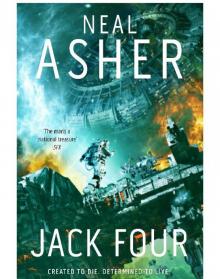 Jack Four
Jack Four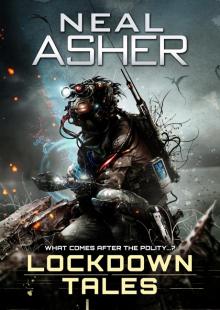 Lockdown Tales
Lockdown Tales The Warship
The Warship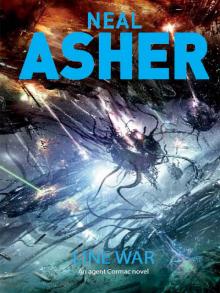 Line War
Line War Total Conflict
Total Conflict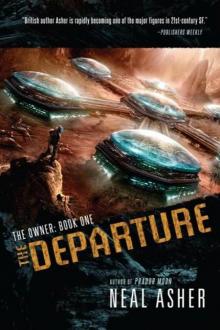 The Departure
The Departure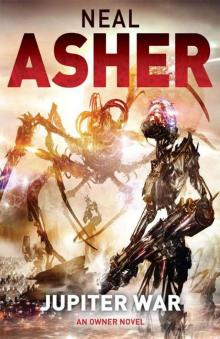 Owner 03 - Jupiter War
Owner 03 - Jupiter War Polity Agent
Polity Agent Prador Moon
Prador Moon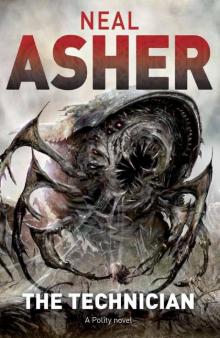 The Technician
The Technician Hilldiggers
Hilldiggers Gridlinked
Gridlinked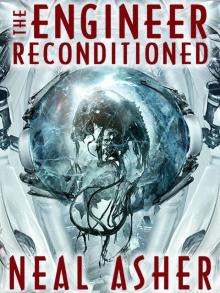 The Engineer ReConditioned
The Engineer ReConditioned Dark Intelligence
Dark Intelligence The Soldier: Rise of the Jain, Book One
The Soldier: Rise of the Jain, Book One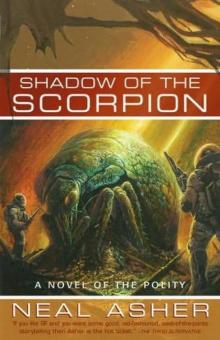 Shadow of the Scorpion p-2
Shadow of the Scorpion p-2 The Skinner
The Skinner The Soldier
The Soldier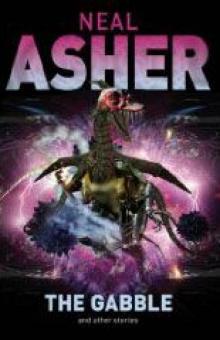 The Gabble p-13
The Gabble p-13 The Gabble and Other Stories
The Gabble and Other Stories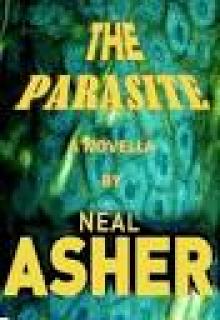 The Parasite
The Parasite The Other Gun
The Other Gun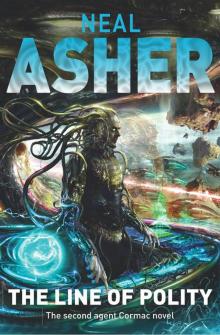 The Line of Polity
The Line of Polity Zero Point (Owner Trilogy 2)
Zero Point (Owner Trilogy 2)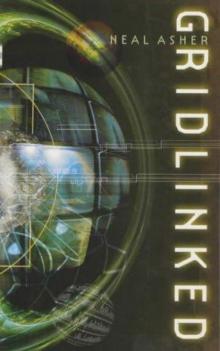 Gridlinked ac-1
Gridlinked ac-1 Prador Moon p-1
Prador Moon p-1 Infinity Engine
Infinity Engine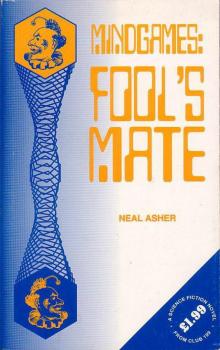 Mindgames: Fool's Mate
Mindgames: Fool's Mate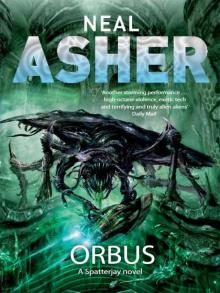 Orbus
Orbus Africa Zero
Africa Zero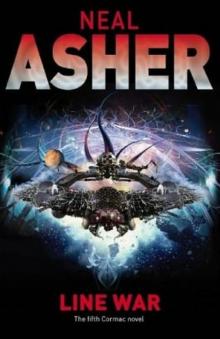 Line War ac-5
Line War ac-5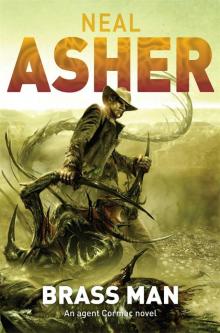 Brass Man
Brass Man The Departure to-1
The Departure to-1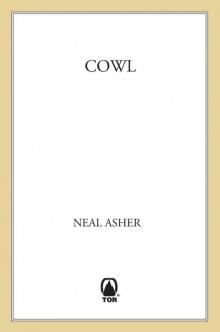 Cowl
Cowl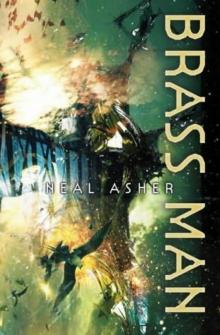 Brass Man ac-3
Brass Man ac-3 Hilldiggers (polity)
Hilldiggers (polity)![Greg Bear - [Eon Trilogy 1] - Eon (rescan) (v1.0) Read online](http://i1.bookreadfree.com/i2/04/08/greg_bear_-_eon_trilogy_1_-_eon_rescan_v1_0_preview.jpg) Greg Bear - [Eon Trilogy 1] - Eon (rescan) (v1.0)
Greg Bear - [Eon Trilogy 1] - Eon (rescan) (v1.0) The Skinner s-1
The Skinner s-1 The Voyage of the Sable Keech s-2
The Voyage of the Sable Keech s-2 The Line of Polity ac-2
The Line of Polity ac-2 War Factory: Transformations Book Two
War Factory: Transformations Book Two Polity Agent ac-4
Polity Agent ac-4